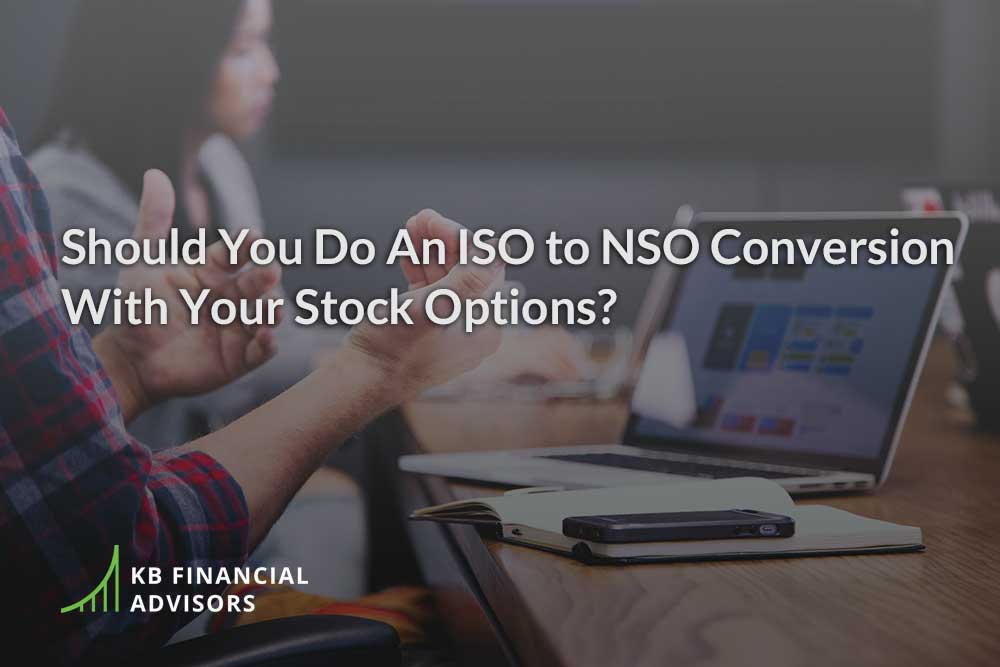In this article we’ll talk about how individual investing has evolved over time, and why Separately Managed Accounts (SMAs) could very well be the future of personalized investing. Especially when you consider the recent decrease in their investment requirement, SMAs could be a total game-changer for many young professionals building long-term wealth.
When it comes time to invest the cash you get out of your stock options, there are three keys we focus on with every client:
1) Broad diversification
2) Low cost
3) Having an easy-to-leave-alone setup so you can focus on your life and your career while your investments build wealth for you
The ironic thing is, your stock options and shares are the exact opposite of these three keys.
First, the inherent definition of employee stock options means they’re only stock in ONE company… which is concentration, not diversification.
Second, they involve a high cost, especially when taxes come into play.
And third, you can’t ignore stock options if you want them to do anything for you: they require time, attention, and focus.
So… if you’ve got stock options, the MAIN goal is to take them from a concentrated stock position to something that’s more diversified that will create financial independence.
The question, though, is how?!?
The History of Investing for Individual Investors
When you think about creating your diversified portfolio, it’s helpful to understand the history of investing for individual investors.
(But, I PROMISE this isn’t going to be a boring history lesson ???? – you’re gonna love it.)
When our grandparents invested, they almost always had to rely on a stock broker… an individual person they’d go to who would sell them stocks and bonds. In this era, people usually focused on buying single, individual stocks in companies. (Remember when your friend had that framed certificate because their grandpa bought them a single share of Disney stock? THIS is the generation and approach I’m talking about here.)
Our parents, then, were the ones who transitioned from buying individual stocks and bonds to being more focused on mutual funds. They probably still bought those funds through a broker, but the focus on mutual funds was what made a diversified portfolio easy and accessible for individual investors.
Then, in our generation, we’ve moved into mutual funds that have low minimums, and to exchange-traded funds (EFTs) where for the price of one single share, you can have the beginnings of a diversified portfolio. We’ve even got automated, robo-investing platforms that do all the work for us: they diversify, rebalance, and report your gains and losses without a single human lifting a finger.
The Problem with Mutual Funds and EFTs: They’re an All or Nothing Deal
I don’t want to diminish the importance of mutual funds or ETFs.
They’re definitely THE things that made those three keys I mentioned at the beginning of the article (diversification, low cost, and easy) possible for the everyday person.
However, they’re not perfect.
They’ve got some downsides.
First, they don’t let you manage your portfolio at the security (or individual stock and bond) level.
For example: if you’ve got an S&P 500 index fund, if you buy shares in it, you own 500 individual stocks… but it’s an all or nothing approach. You either get all 500 stocks, or you don’t get any.
Second, there’s no customization for individual needs.
With an S&P 500, your gains and losses are calculated based on the performance of all 500 stocks. The gain or loss is an average that’s based on the over-performance of some stocks, and the under-performance of others. So, even in a good year, there are still losers… but you can’t harvest the losses from the stocks that lost a lot of money.
Let’s take the year 2020 for example:
The S&P 500 was up 16.3% from January 1, 2020 to December 31, 2020.
But when you break it down, you see some clear winners and losers:
- Tesla returned 743%
- Etsy returned 301%
- Carnival Cruise Lines lost 57%
- Occidental Petroleum lost 56%
But because all of these stocks are rolled into a fund, you can’t access the losses to help you pay the taxes on the gains you got from your stock options and shares outside of this fund.
In other words, you can’t prefer or exclude individual stocks with the fund-style setup.
ESG Considerations: Another Downside to Mutual Funds
ESG stands for Environmental, Social, and Governance.
If you want to exclude stocks from your portfolio that represent companies with questionable practices (like child labor), a fund-style setup won’t let you do this. Remember: funds are an all-or-nothing deal.
Fortunately, ESG funds do screen for these things, so if you don’t want companies that participate in child labor, you can choose a fund that screens for that. The only downside is, most ESG funds screen for multiple things, and you don’t get to pick and choose which things to screen for. This, by default, may exclude some companies from your investment strategy that you’d like to invest in.
Why Separately Managed Accounts are the Future of Personalized Investing
So… how do you solve these problems?
Separately managed accounts. (Or SMAs.)
They’ve been around for a while, but like all things finances, they’re constantly changing.
But since we *always* have our eye on better, smarter ways to invest, we think some of the changes happening with separately managed accounts are a great way to solve for each client’s unique needs when it comes to investing.
With separately managed accounts, you still get those all-important three keys of diversification, low cost, and an easy portfolio that works on its own, but they can take away some of the downsides of mutual funds and ETFs.
With an SMA, you can manage your investments at the security level, and you can curate a portfolio that meets your unique investing needs and preferences.
This can be incredibly helpful with taxes, because you don’t just get slapped with an average gain or loss at the end of the year: you can harvest losses at the individual stock level, which makes it a lot easier to manage large gains after a successful IPO.
Minimum Investing Requirements for Separately Managed Accounts: This is Why They’re the Future of Personalized Investing
The last hurdle we dealt with regarding separately managed accounts, however, was the amount required to invest. In the past, it could take tens of millions of dollars to establish an SMA… which just isn’t possible for most young people working in tech companies.
Now, though, that minimum has gone down to $500,000, which is MUCH more accessible… and something that you can feasibly work towards if you’re not there yet. We’re able to include these in client portfolios of $2 million or more, and we’re so excited.
Are Separately Managed Accounts the future of personalized investing? We think so.
To say we’re thrilled about this is an understatement.
SMAs used to be out of reach for our client base, but they’re an incredible investing solution, and we can’t wait to start helping people invest better with them.
It’ll give us the ability to approach investing the same way we approach stock options: with the belief that each client is unique. We don’t just take your numbers, plug them into a program, and generate a cookie-cutter recommendation. We take time to learn your unique needs, and build a plan for you different from everyone else’s.
And now, we can do that for your entire investment strategy, and not just your stock option plans.
If this sounds like it might be something that’s right in your alley, book a call today.






